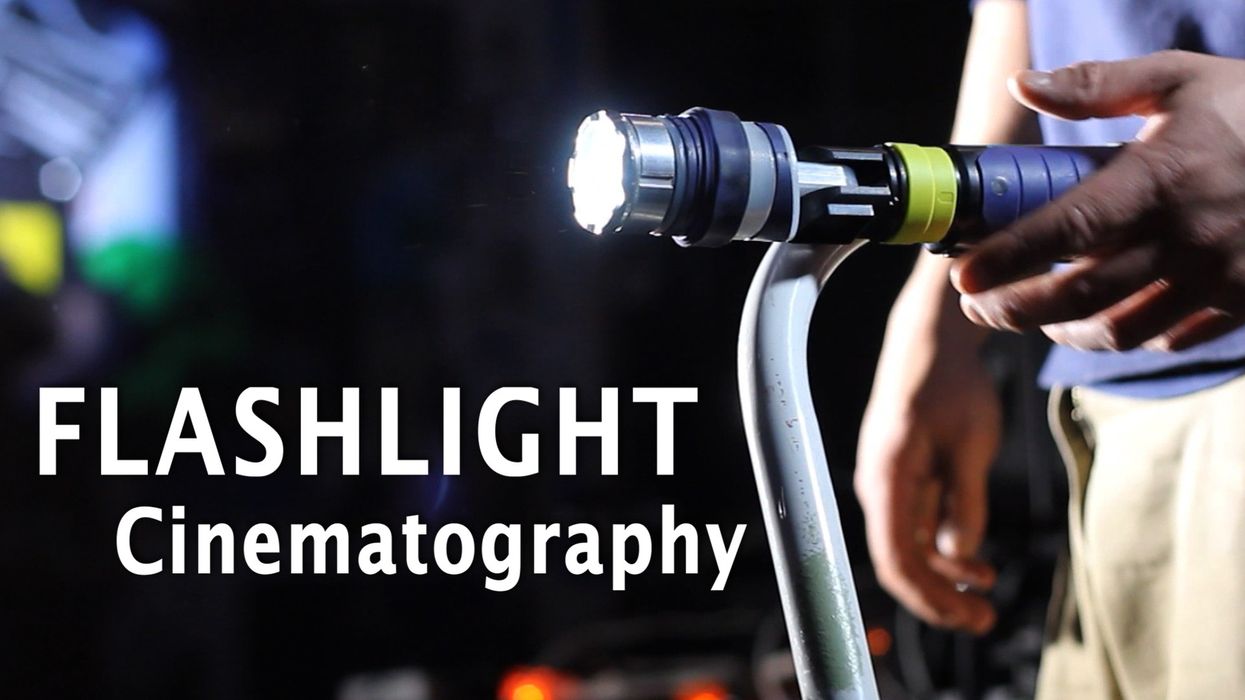Flashlights & Magnifying Glasses: The Dirt Cheap DIY Approach to 3-Point Lighting

Lighting plays a huge role in making a film look aesthetically pleasing and cinematic, and though lighting kits can be expensive, there are always DIY workarounds to keep costs down. But, could you imagine if you pulled out a bunch of cheap flashlights on the first day of shooting? Your cast and crew might laugh you right off the set. However, Joey Shanks, who never fails to share his invaluable DIY film tips, shows us how these small, but increasingly powerful flashlights can be used with a few inexpensive mods to give your shots all the illumination they need.
Shanks uses Kobalt Work Lights for his key and fill lights, which you can order off of Amazon for about $10, or Lowe's for about $7, and these things have some pretty excellent features for DIY filmmakers. They have a cordless rechargeable battery, 4 settings, and a flexible hose that you can use to mount it or stabilize it (though using a tripod would be ideal). For his backlight he uses a 400 lumen flashlight.
He also uses a variety of different items to modify the light, including gels, wax paper (for diffusion), and even a magnifying glass to make your beam more narrow. For just the flashlights, you can purchase them all for around $30, but for everything, including the modifiers, clamps, gels, and stands -- essentially an entire 3-point lighting kit, Shanks lists it at $150 brand new. Now, that might not sound like the cheapest kit, but remember that this setup is super compact, doesn't give off heat, and some of the pieces can be repurposed to do other tasks.
At any rate, here's Joey Shanks to show you how to make a cheap, DIY 3-point lighting setup:
Personally, I'm so glad that this tutorial exists, because it answers the question that I've always asked myself, but was too afraid to test for fear of looking (feeling) like an amateur: "Can I light this scene with flashlights, or would that be -- completely stupid?"
I've used several random lights I've found lying around the house: LED headlamps, party lights, and myriad of different work lights, but only to serve as a quick fill -- certainly not for a full 3-point setup. Granted, using flashlights isn't going to work to light every scenario, but it's important to know that these lights are only getting more powerful, like this one from Nitecore that puts out 3,500 lumens, so having them in your gear bag for more than common utilitarian purposes isn't as weird or unprofessional as it sounds.
Now that Shanks has shown us that there's no shame in the flashlight lighting game, maybe you'll want to try it out for your next project.
[via Shanks FX]











